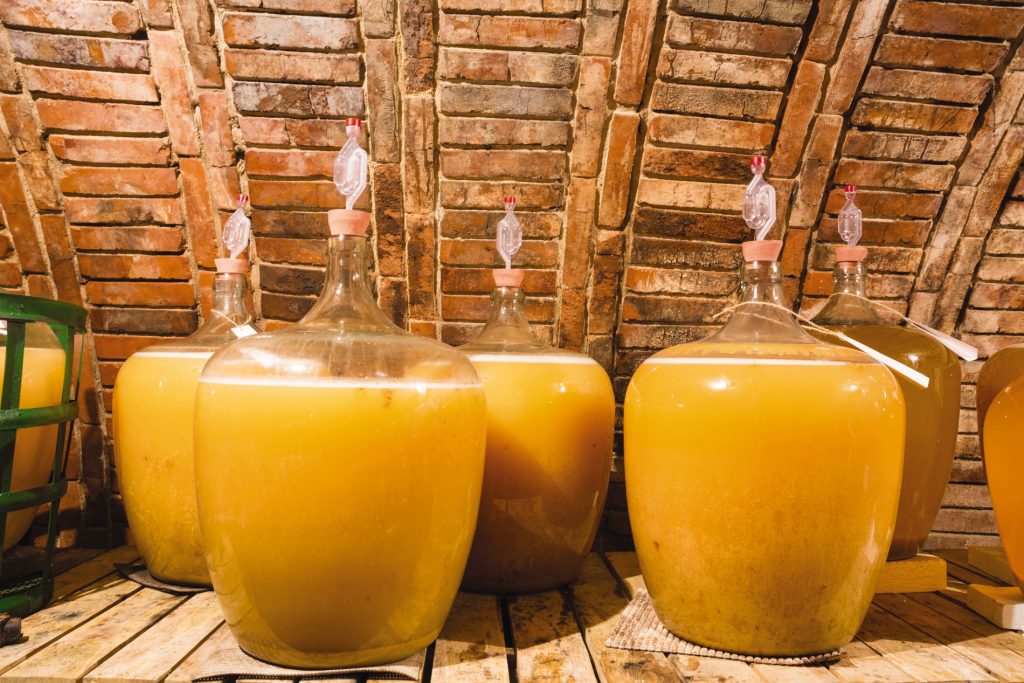A study of fermentation by yeast is an interesting extension of AP* Biology Lab 5 Cell Respiration. It also offers possible tie-ins to Lab 1 Diffusion and Osmosis and Lab 2 Enzyme Catalysis. In this activity, students measure the rate at which yeast ferments solutions of differing sucrose concentrations and apply the results to common processed beverages and foods.
In use, a test chamber is filled with a sucrose solution/yeast suspension and inverted in a petri dish. (If using a pipet, the tip of the pipet will have to be blocked to prevent the test solution from draining out.) As CO2 is produced by fermentation, it will collect at the top of the test chamber. The change in the volume of the bubble gives a measure of the rate of fermentation.
Materials
- Packets of dried yeast
- sucrose solution (1M, 0.8M)
- Small graduated cylinders or pipets (for use as test chambers)
- Small Beaker
- Petri dishes
- Ring stand with clamps (to hold the test chambers)
- Water
Procedure
Note:Because there will be variations in the activity of the yeast suspensions and variations in the volumes of the test chambers, you will need to test the following recommendations and adjust as necessary. For example, you may have to increase the volume of yeast suspension used and/or increase the running time beyond the recommended 15 minutes.
- Make a yeast suspension in the small beaker by stirring a pack of dried yeast into 50 mL of water.
- Add enough of the test sucrose solution to the petri dish to cover the bottom.
- Stir the stock yeast suspension and add 5 mL to a test chamber.
- Finish filling the test chamber with the test sucrose solution.
- Repeat steps 2 to 5 for each sucrose concentration being tested.
- Record the beginning volume of the bubble in the top of the test chamber.
- Wait 15 minutes and record the volume again.
- Subtract the beginning volume from the end volume to determine the volume of CO2 produced.
Analysis
Graph the data for all sucrose concentrations tested. What is the independent variable? Use it to label the x-axis of the graph. What is the dependent variable? Use it to label the y-axis. From the resulting graph, what is the relationship, if any, of sucrose concentration to rate of fermentation?
Extension
Try testing unknowns by substituting the sucrose test solutions with sodas or fruit and vegetable juices. Notice the ingredients list on the beverage containers. Could any of the ingredients inhibit or promote fermentation?
You can even test solid foods such as cookies and cakes. For solid foods, weigh out a gram of the food to be tested. Add the test sample of food to 10 mL of water in a test tube, cap, and shake vigorously to extract as much sugar into solution as possible. Wait for the food particles to settle and bubbles to rise to the surface and test the resulting solution.
Estimate the sugar concentrations of the unknowns by comparing the results to the lines on the graph produced by solutions of known concentrations.

Using 3 different sugar solutions, students learn about fermentation and study yeast’s carbon dioxide production rate. In Activity 1, students conduct an experiment to determine how fermentation rate varies between glucose and sucrose and with concentration. During Activity 2, the class develops and carries out an experiment to answer a question of their choosing about fermentation.
Beginning–Easy to perform; requires little or no prior knowledge.
About The Author
Carolina Staff
Carolina is teamed with teachers and continually provides valuable resources–articles, activities, and how-to videos–to help teachers in their classroom.

